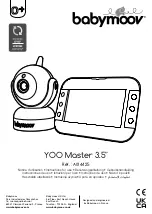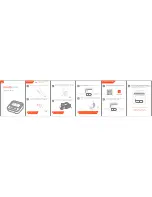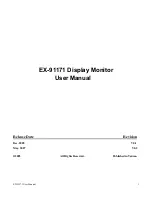
©Copyright Task Force Tips LLC 2012-2019
LIB-065 August 30, 2019 Rev 01
5
2.4 NOZZLE COUPLINGS
NH (National Hose Threads per NFPA #1963) threads are standard on all nozzles. Other threads such as NPSH (National Pipe
Straight Hose threads per ANSI/ASME #B1.20.7) can be specifi ed at time of order.
CAUTION
Nozzle must be properly connected. Mismatched or damaged threads may cause nozzle to leak
or uncouple under pressure and could cause injury.
CAUTION
Do not couple aluminum to brass. Dissimilar metals coupled together can cause galvanic
corrosion that can result in inability to unscrew threads or complete loss of thread engagement.
2.5 USE WITH SALT WATER
Use with salt water is permissible provided the nozzle is thoroughly cleaned with fresh water after each use. The service life of the
nozzle may be shortened due to the eff ects of corrosion and is not covered under warranty.
2.6 USE WITH FOAM
Nozzles may be used with foam solutions. Refer to fi re service training for the proper use of foam.
WARNING
For Class B fi res, lack of foam or interruption in the foam stream can cause a break in the foam blanket
and greatly increase the risk of injury or death. Assure that: Application rate is suffi cient (see NFPA 11
or foam manufacturer’s recommendations); Enough concentrate is on hand to complete task (see NFPA
for minimum duration time requirements); Foam logistics have been carefully planned. Allow for such
things as: Storage of foam in a location not exposed to the hazard it protects; Personnel, equipment
and technique to deliver foam at a rapid enough rate; Removal of empty foam containers; Keeping clear
path to deliver foam as hoses, other equipment and vehicles are deployed.
WARNING
Improper use of foam can result in injury or damage to the environment. Follow foam manufacturer’s
instructions and fi re service training to avoid: Using wrong type of foam on a fi re, i.e. Class A foam on a
Class B fi re; Plunging foam into pools of burning liquid fuels; Causing environmental damage; Directing
stream at personnel.
WARNING
There is a wide variety of foam concentrates. Each user is responsible for verifying that any foam
concentrate chosen to be used with this unit has been tested to assure that the foam obtained is suitable
for the purpose intended.
3.0 FLOW CHARACTERISTICS
Each Ultimatic ER nozzle has a pressure rating on the face of the baffl e which can be seen by looking at the front end of the nozzle.
Make sure that the pump system that is being used is capable of the fl ows and pressures of the selected Ultimatic ER Model.
Automatic nozzles operate by sensing the pressure at the nozzle’s inlet and adjusting the discharge opening to maintain a constant
pressure throughout the fl ow range of the nozzle. For example, when the pressure at the inlet increases, the exit area is automatically
increased until the inlet pressure returns to the nominal pressure of the nozzle.
0
75
150
225
300
375
450
0
2
4
6
8
10
12
0
20
40
60
80
100
120
140
160
180
200
10
30
50
70
90
110
130
FLOW (LPM)
PR
ESSUR
E
(B
A
R
)
PR
ESSUR
E
(PSI)
FLOW (GPM)
ULTIMATIC ER NOZZLES - FLOW CURVES
B-TO-ERP-150: 10-125 gpm @ 150 psi (40-500 l/min @ 10 bar)
B-TO-ERP-120: 10-125 gpm @ 120 psi (40-500 l/min @ 8 bar)
B-TO-ERP: 10-125 gpm @ 100 psi (40-500 l/min @ 7 bar)
BL-TO-ERP: 10-100 gpm @ 75 psi (40-400 l/min @ 5 bar)
Fig 3.0





























